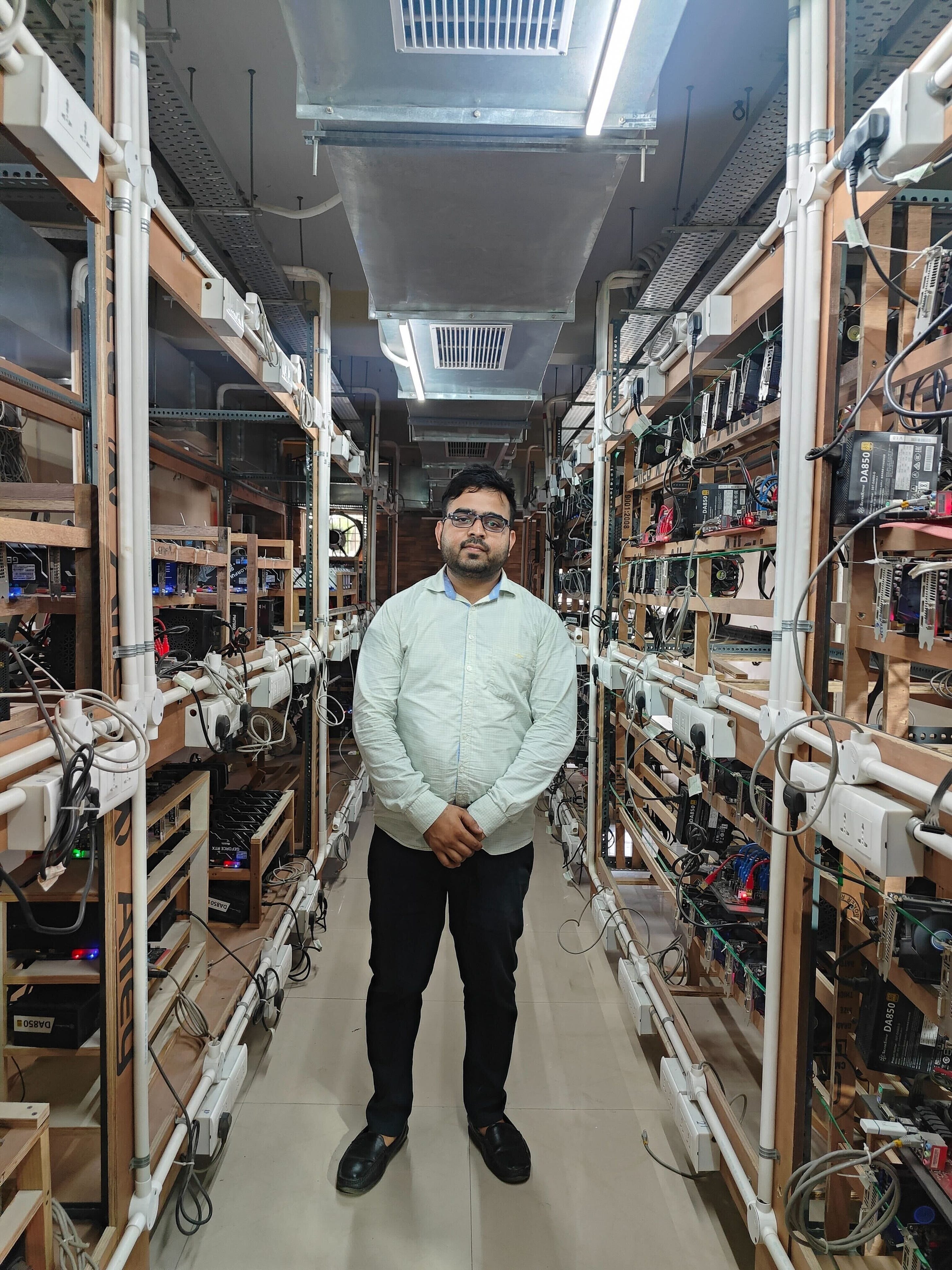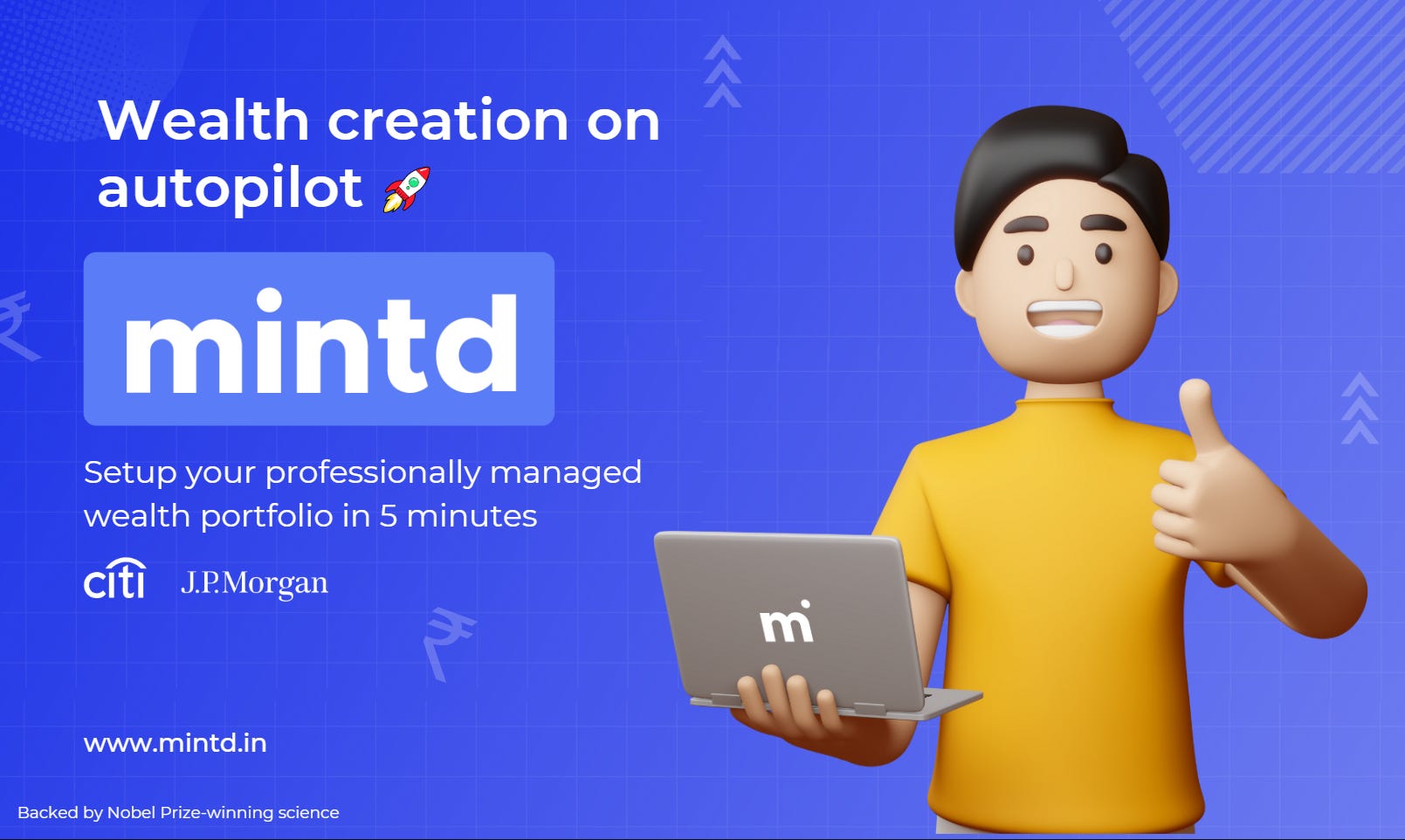The Signal - Rigs in the boondocks
Rigs in the boondocksHow the Ethereum Merge and crypto downturn affected the fortunes of India’s small-town entrepreneurs
Good morning! A big hello to readers who signed up this week. Welcome to The Intersection, The Signal's weekend edition. This weekend we talk about The Merge and its impact on India’s crypto mining ecosystem. Also in today’s edition: we have curated the best weekend reads for you. Pardeep Narwal’s office is a needle in the haystack that is the HUDA Complex in Rohtak, Haryana. Sandwiched between a Shiva temple and a BSNL exchange, New Edge Soft Sol Private Limited is impossible to locate without directions from its founder. But once inside, you’re struck by the distinctiveness of a business housed in a nondescript building. The sea of wires, rows of humming graphic processing units (GPUs), and the sweltering heat they generate point to one thing: you’ve arrived at one of India’s very few indigenous crypto mining farms. The 300-odd GPUs at New Edge Soft Sol Private Limited validate Ethereum (ETH) 24x7, which the company says is the equivalent to around 3,000 computers running simultaneously without any break. Narwal is a gold medallist in electronics and communications engineering and knows a blockchain bluff when he sees one. He was privy to people peddling dubious cryptocurrencies at the height of the pandemic. So it wasn’t long before he transitioned from teaching and selling ed-tech to piloting his own ETH validating business. Because, as he puts it, he wanted to be the first at something: “All my life, I ended up being the last at everything. If you’re at the last rung of something that’s been done 1,000 times before, chances of you making it big are slim.” Cut to today, Narwal says he can extend his capacity to a whopping 900 GPUs. He has to wait it out though. The Ethereum Merge, which just concluded on September 15, moved the world’s second-largest blockchain from the power-guzzling proof-of-work (PoW) protocol to the more energy-efficient proof-of-stake (PoS) model. Developers claim this monumental upgrade will slash Ethereum’s consumption by 99.9%. But at the other end of the positive spectrum, Ethermine—the world’s largest ETH mining pool provider—had to shut off its PoW systems. “Ethereum Merge is a pivot of unprecedented scale and complexity in the crypto ecosystem,” says Ashish Singhal, Co-founder, and CEO, CoinSwitch Kuber. “Ethereum's successful transition to a greener and energy-efficient blockchain will, in the long term, lead to the greater adoption of the technology,” Singhal tells The Intersection. Where does this place about 55,000 small and medium-scaled Indian mining operators like Narwal? The entrepreneur admits that everything hinges on future demand, not least in a struggling crypto market. But he seems unfazed by both, the heat in the mining room and what the future holds. He reasons that he can outsource GPUs to companies that need high-end infrastructure for graphic designing, video editing, and cloud storage minus the heavy investment. After all, he has an on-site engineer who oversees GPU maintenance round the clock. For all his optimism, Narwal isn’t just contending with the Merge and the larger crypto downturn. In India—where power backup is more privilege than necessity and whose government has turned hostile to crypto— miners are teetering between survival and failure.
Why the fuss over PoS?It is pertinent to understand how PoS works before we get to what ails Indian crypto miners. One of the defining characteristics of blockchain is that it is decentralized. No singular entity is responsible for validating or approving every transaction. Instead, this power is equally distributed between every participant on the chain. But how do you get all contributors on the same page, or on a consensus to validate transactions in a uniform manner? The world’s largest cryptocurrency, Bitcoin (BTC), operates on PoW. Here, miners hustle to become the first to solve a complex, arbitrary mathematical problem. Think of it as an intense game of trial and error, where miners are searching for that one unique, random nonce. It generates a hash whose value is lower than the network's decided level of difficulty. And the first one to find this hash gets to validate the next, freshly-minted block of cryptos. On average, a new BTC block is added to the chain every 10 minutes. But this mechanism needs sophisticated hardware that devours about 96.5 terawatt-hours (TWh) of electricity annually, per the 2019 Cambridge Bitcoin Electricity Consumption Index. One TWh represents one trillion watt-hours. If BTC was a country by itself, it would come dangerously close to the annual electricity consumption of countries like Pakistan (103.5 TWh) and the Netherlands (116.278 TWh). In fact, it would leave behind Chile (82.22 TWh), Venezuela (78.08 TWh), and Finland (83.68 TWh) by a mile. Other conservative estimates peg BTC’s annual energy consumption at 131.80 TWh, just short of Egypt (149.07 TWh) and Malaysia (150.06 TWh). Phew! To sum up, PoW guzzles energy for breakfast, lunch, dinner, and everything in between. Mining top cryptos generates about 140 million metric tonnes of CO2 every year, of which BTC alone generates around 22-22.9 million metric tonnes. Place this in the context of the climate emergency—average temperatures between 2010-2019 were the highest on record—and you understand why crypto mining needs a makeover: at a time when the world needs saving, PoW is pulling it right back into the grey fumes of environmental destruction. Enter PoS. In this mechanism, each validator must lock a minimum of 32 ETH (around $50,000) to stake on the blockchain. The chain then selects a few validators at random every 12 seconds. Because PoS validators stand to lose a whole lot if they compromise the network in any way, logic dictates that they are likely to act in the community’s best interests. This is the model ETH has shifted to, something Ethereum co-founder Vitalik Buterin had been considering since 2014. And now, it’s finally done. Rajagopal Menon, Vice President, WazirX, says the Merge does not directly address issues of scalability or high gas fees but it paves the way to address them in future updates. “One of the key benefits of the Merge is the dramatically reduced ETH issuance which has been dubbed the "triple-halving" of ETH,” Menon says. Upheaval2022 is the year of reckoning for cryptocurrencies. Macroeconomic factors such as rising interest rates and a looming bear market made a corpse out of crypto. The industry’s market cap plummeted below $1 trillion a little over a week ago. ETH sunk 54% this year, falling a further 5.6% after The Merge. Some of the worst hit are ETH’s PoW miners, now rendered virtually redundant after collectively raking in $19 billion in revenues last year. Sandeep Gupta would know. The man who runs a rig in Ambikapur, Chhattisgarh, is experiencing an overwhelming sense of disassociation from his ambitious venture. What started as a mining operation for BTC and ETH in 2017 with a 400-strong workforce is on the brink of collapse. “No way I am making any further investments in crypto mining. In fact, I’m looking to sell my equipment as soon as possible. Mining has no future in India,” he says. Mining rigs are a microcosm of the whirring of computer screens, high-end hardware, and cooling vents that struggle to stave off heat (especially in India). As mentioned above, not everyone can afford this investment. Prakash Taank, who runs a mining facility named Foxxknit in Rajnandgaon, also in Chhattisgarh, says a basic rig comprises five GPUs, a motherboard, sufficient random access memory (RAM), a custom central processing unit (CPU), riser cables, and solid state drives (SSDs), among other things. The bare minimum capital expenditure can run up to ₹7 lakhs. To top it all, mining operations cannot function without consistent electricity supply or backup– which as we all know is hard to come by in the country. In Chhattisgarh, the per-unit electricity cost touches ₹8. According to him, the minimum cost for running a single rig is ₹5,000. Depending on the setup, the bills per rig run as high as ₹10,000 per month. Over in Rohtak, Haryana, where Pardeep Narwal runs New Edge Soft Sol Private Limited, electricity for commercial consumption costs ₹7.1 per unit. Narwal pays ₹3 lakh per month on average since his rig’s monthly consumption exceeds 35,000 units. “We made it clear to our clients that there is no backup facility in case of a power cut. Although the electricity supply here is fairly consistent, there are infrequent blips where the validation process completely stops,” he says. Foxxknit’s Prakash Taank has dealt with even greater obstacles. Currently disillusioned by the crypto pushback, both by the Indian government and the larger public, he tells The Intersection that his life—and those of his loved ones—were at stake. “I’d prefer not to talk about my crypto ventures because I’ve paid a terrible price for getting coverage in a few Hindi publications. I received threatening calls from policemen and extortionists. One of my friends was even kidnapped. I don’t want to go through this again,” he shares. Top all this with the fact that the crypto downturn is yielding returns of just 2%-3% for mining rigs here, and you realise the full scale of what these entrepreneurs are up against. Back in crypto’s halcyon days, Pardeep Narwal would charge 10%-20% of monthly profits earned by his clientele. They’d also foot the electricity bills. But now, his clients’ earnings have dropped to less than $100 (Rs 8,000). No wonder he’s considering revenue sources such as GPU outsourcing; his earnings depend on how much his 45 clients make. Narwal is also introducing a new system that will include a fixed base charge of ₹1,500-₹2,000. This amount, which will cover the rig’s basic expenses, will be charged over and above the profit percentage. The mining rig honcho is mulling a return to edtech as well: he wants to create blockchain curricula for schools and universities. Pardeep Narwal perhaps has what it takes to HODL (Hold On For Dear Life, in crypto slang). Sandeep Gupta and Prakash Taank in Chhattisgarh, however, have had enough. Ira Puranik is New Delhi-based a freelance journalist and a 2022 Tow-Knight Center Fellow. She writes on personal finance, markets, and crypto. She can be reached at @puranikira on Twitter. A MESSAGE FROM OUR PARTNERSmart Investor, Smarter PlatformConventional wisdom says it pays to invest in debt when interest rates go up. But it is not easy for ordinary investors to assess the risk of investing in debt. The smart idea then could be investing in lenders. It’s no surprise that five of the top 10 stocks by market cap today are those of financiers. But how to pick them like expert fund managers do? If it’s any comfort, even 95% of fund managers often get it all wrong. Lay investors can’t afford the services of the best of them anyway. Solution: What if wealth creation is put on autopilot? Mintd is a platform that deploys Modern Portfolio Theory (MPT) to create and manage personalised investment portfolios. BTW, economist Harry Markowitz won the Nobel Prize for MPT or theory of portfolio choice in 1990. It costs only a fraction of an average wealth manager’s fee. Quite cool, if you ask us. We have a special offer for The Intersection readers: Users can have a call booked with our team. ICYMIWeb3 is not going great: A rented mansion in Beverly Hills plays host to an a16z-backed "community" called Launch House, loosely modelled around creator houses (Hype House). Are any alarm bells ringing? They should. Launch House, according to this Vox investigation, was rife with douchebros doing douche-y things—ranging from a running cringy hustleporn cult to serious sexual assault. (TW: reader discretion is advised) Theranos 2.0: The year was 2020. Trevor Milton had a strategic partnership with GM. His company Nikola, which manufactured hydrogen-electric trucks, announced a slate of next-gen vehicles and was touted as the next Tesla. A SPAC soon followed. Then came the bombshell: there was no functional truck, leave alone proprietary hydrogen technology. This Bloomberg Businessweek story rips the bandage off the façade that was Nikola. Bonus: corporate espionage and a murky backstory of the man who swindled investors and customers alike. Reel to real: The January 6 insurrection, kickstarted by a pro-Trump mob, also birthed memes. A whole lot of them. Although this didn't lead to Trump remaining in the White House, it did show how social media amplifies and, at times, percolates into real life—a call to arms to fight democracy in this case. Check out this excerpt in The Atlantic from an upcoming book, Meme Wars: The Untold Story of the Online Battles Upending Democracy in America. The China story: Cai Xia trained high-ranking bureaucrats and advised top leaders of the Communist Party of China (CPC) at its Central Party School for 15 years until 2012. An advocate of political and economic reforms, she was expelled from the CPC in 2020 after criticising President Xi Jinping. In this deeply insightful piece for Foreign Affairs, written by Cai in exile from the US, she lays bare the violent undercurrents beneath the calm surface of the CPC. And here is an older article based on a talk by one of the world’s foremost China experts, John Garnaut, on the ideological framework in which Xi’s China functions. Grabbed attention: Pakistan’s Sialkot is well-reputed for being a global exporter of surgical instruments, musical instruments, sporting goods, and leather products. Seeing the enthusiasm towards entrepreneurship, Alibaba is helping sellers in Sialkot to set up online and offline stores, and with logistics. Alibaba has been working to make Pakistan a global digital trade hub for five years now. About 90% of Pakistani sellers listed on Alibaba are from Sialkot. Enjoy The Signal? Consider forwarding it to a friend, colleague, classmate or whoever you think might be interested. They can sign up here. We recently got funded. For a full list of our investors, click here. Want to advertise with us? We’d love to hear from you. Write to us here for feedback on The Intersection. If you liked this post from The Signal, why not share it? |
Older messages
Darjeeling tea is in hot water
Friday, September 16, 2022
Also in today's edition: TikTok gets grilled; Ray-Ban's rose-tinted metaverse ambitions; All eyes on SCO summit; Canva has suite dreams
The casual bravado of Byju Raveendran
Thursday, September 15, 2022
Also in today's edition: Nintendo's skin in the game; The creator economy is flailing; Vedanta to make iPhones; Warner Bros. Discovery wants you to pay up
Twitter wants Musk to buy it
Thursday, September 15, 2022
Also in today's edition: More problems for Peloton; Edtech woes continue; Roadblock for Adani?; Uniqlo's winning
Tata wants a sip of Bisleri
Tuesday, September 13, 2022
Also in today's edition: Roblox for grownups; Everyone wants satellite tech; Global property blues; How Fairplay hedged its Asia Cup bets
YouTube is on a learning curve
Monday, September 12, 2022
Also in today's edition: Tata 🤝 iPhone; Gaana sings the subscription tune; VCs go abuzz; India's rule of three at the IPEF
You Might Also Like
An easier way to share emails with friends
Tuesday, November 26, 2024
Every year we bring the highest quality software to RocketHub for an insane BFCM event. This year is no different! BFCM starts now so check the page below for one new lifetime deeaaal drop each day.
$25,000/mo from a boring niche news website
Tuesday, November 26, 2024
Don't overlook niche news...
Your "golden ticket in a chocolate bar" moment
Tuesday, November 26, 2024
A $250K+ affiliate is ready to work with you View in browser ClickBank Logo Ever heard of Charlie and the Chocolate Factory? The story begins with a brilliant chocolatier announcing that he will be
The Productize course is 48% off for the next 48 hours!
Monday, November 25, 2024
Save almost $250 on the web's best resource for learning how to productize your services and scale your way out of the "time for money" trap. ͏ ͏ ͏ ͏ ͏ ͏ ͏ ͏ ͏ ͏ ͏ ͏ ͏ ͏ ͏ ͏ ͏ ͏ ͏ ͏ ͏ ͏ ͏
🌁#77: Amid Big Model Chaos: Small Models and Embeddings Steal the Spotlight
Monday, November 25, 2024
plus our usual collection of interesting articles, relevant news, and research papers. Dive in!
🦅 Masterclass with Jose Rosado - Confirmation
Monday, November 25, 2024
Add the event to your calendar ͏ ͏ ͏ ͏ ͏ ͏ ͏ ͏ ͏ ͏ ͏ ͏ ͏ ͏ ͏ ͏ ͏ ͏ ͏ ͏ ͏ ͏ ͏ ͏ ͏ ͏ ͏ ͏ ͏ ͏ ͏ ͏ ͏ ͏ ͏ ͏ ͏ ͏ ͏ ͏ ͏ ͏ ͏ ͏ ͏ ͏ ͏ ͏ ͏ ͏ ͏ ͏ ͏ ͏ ͏ ͏ ͏ ͏ ͏ ͏ ͏ ͏ ͏ ͏ ͏ ͏ ͏ ͏ ͏ ͏ ͏ ͏ ͏ ͏ ͏ ͏ ͏ ͏ ͏ ͏ ͏ ͏ ͏ ͏ ͏
🛍️ Advise.so Black Friday DEAL IS LIVE
Monday, November 25, 2024
GM Nerds You probably already know I run hands-down the BEST SEO community on the internet–certainly the most active by a mile. That's the Advise community, and it's 10/10. Currently it costs
$1 Million Blog (without Google) + Best Early Black Friday Deals!
Monday, November 25, 2024
What happens when you try to grow a website without even worrying about Google? Sure, you still might follow some of Google's best practices like building internal links...but you're really
The #1 Reason You’re Struggling on LinkedIn
Monday, November 25, 2024
Yo Reader, In yesterday's email, we talked about why most LinkedIn strategies flop harder than a bad infomercial. Today, let's dig deeper. Here's the cold, hard truth: Most people are stuck
Big, sexy, expensive... and great for your next product launch [Roundup]
Monday, November 25, 2024
Say goodbye to the traditional agency and hello to algorithm-driven results. No more slick-talking account managers or convoluted strategies. All-in-one Amazon Advertising solution, minus the fluff and




